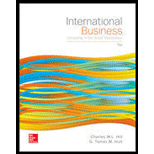
Case summary:
In the year 1856, Person TB founded Company B, which was famous for accessories and trench coats. In the 1990s, one critic defined Company B as an old business. However, later in 2015, Company B was identified as one of the world’s best brands. It is present in 500 cities with 10,600 employees and earns a revenue of $3.6 billion.
Person R and Person A are the two CEOs (chief executive officers) of the company. Person R saw massive hidden value in this brand, so her first step was to reenergize the brand by hiring the best designers. The company changed its direction toward a trendier demographic; that is, young people. By the time Person R retired, she had turned the brand into a world-famous, fashion-conscious brand.
Person A understood that even after Person R’s success the company still faced difficulties. The major disadvantage for the company is its licensing strategy, where it allowed the partners of other countries to design the product and sell it with the Company B brand label. Due to this strategy, the brand equity was affected. The only solution for Person A was to either buy the licence back or acquire the partners.
The changes made by Person R remained the same. Person A started a new strategy to expand the company; that too, to mainly focus on wealthier cities. As a result, there was an increase in the number of stores in the year 2011; the company had 560 retail stores operating in other countries.
Another strategy that she focused on was to improve digital marketing and global marketing strategies; both these strategies resulted in an increase of revenue for the company. Person C started as a creative director for Company B. The branding decision made by him was to remove Company B’s brand iconic check design from practically all Company B products, leaving 10% famous checked pattern products.
Characters in the case:
Person TB,
Person R,
Company B,
Person A,
Person C.
Introduction:
Marketing refers to an activity which includes the creation of a set of institutions that are communicated, delivered, and exchanged. Therefore, that value can be added for the customers and other clients as a whole.
To determine: If it is time for Company B to focus on markets other than 25 wealthy cities and its focus on a well-heeled, younger, and fashion-conscious demographic.
Want to see the full answer?
Check out a sample textbook solution
Chapter IC Solutions
International Business: Competing in the Global Marketplace
 BUSN 11 Introduction to Business Student EditionBusinessISBN:9781337407137Author:KellyPublisher:Cengage Learning
BUSN 11 Introduction to Business Student EditionBusinessISBN:9781337407137Author:KellyPublisher:Cengage Learning Essentials of Business Communication (MindTap Cou...BusinessISBN:9781337386494Author:Mary Ellen Guffey, Dana LoewyPublisher:Cengage Learning
Essentials of Business Communication (MindTap Cou...BusinessISBN:9781337386494Author:Mary Ellen Guffey, Dana LoewyPublisher:Cengage Learning Accounting Information Systems (14th Edition)BusinessISBN:9780134474021Author:Marshall B. Romney, Paul J. SteinbartPublisher:PEARSON
Accounting Information Systems (14th Edition)BusinessISBN:9780134474021Author:Marshall B. Romney, Paul J. SteinbartPublisher:PEARSON
 International Business: Competing in the Global M...BusinessISBN:9781259929441Author:Charles W. L. Hill Dr, G. Tomas M. HultPublisher:McGraw-Hill Education
International Business: Competing in the Global M...BusinessISBN:9781259929441Author:Charles W. L. Hill Dr, G. Tomas M. HultPublisher:McGraw-Hill Education





